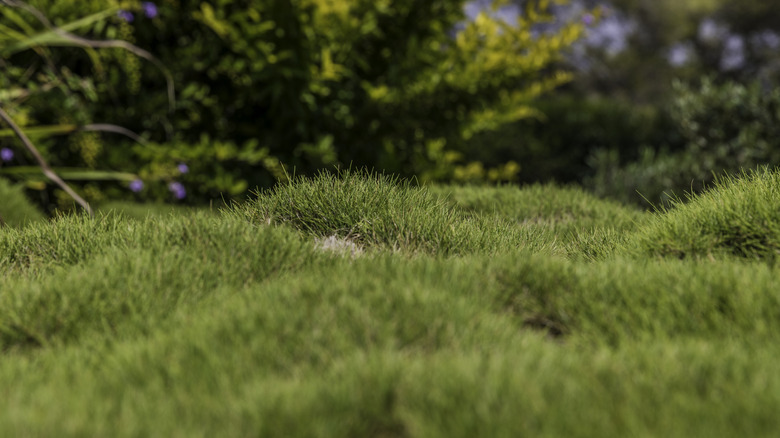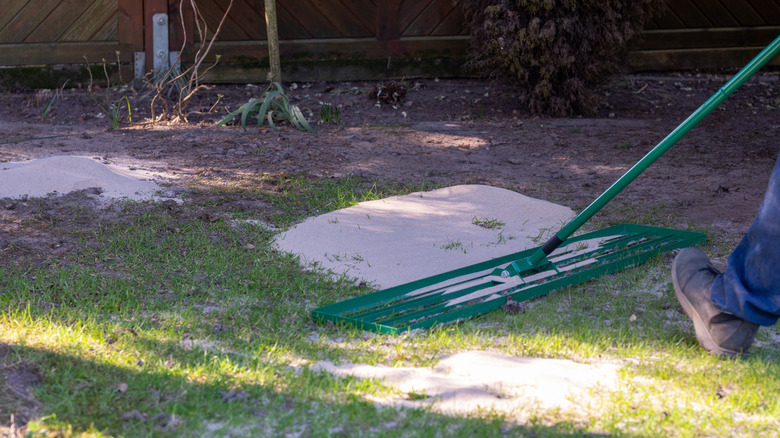The Simple Top Dressing Technique That Can Level Out A Bumpy Lawn
Bumpy and uneven lawns can make it hard to enjoy your yard and even have the potential to become tripping hazards. Fortunately, fixing the issue doesn't have to be difficult or expensive. Top dressing, a strategy of adding materials like sand or compost on top of your existing lawn, can bring you back a lawn you feel comfortable using again.
Top dressing isn't just useful for smoothing out bumps. Depending on what you use to top dress, the strategy can also be helpful for improving the health of your soil. A light top dressing of compost can even be a standard part of proper lawn care for some people. However, if your primary issue is simply low spots and a bumpy yard, then sand or topsoil should be perfect for your purposes. Which product is better depends on your lawn. If your lawn is naturally quite sandy, opt for top dressing with sand or compost. Otherwise you should use topsoil or compost for your top dressing.
How to top dress your lawn
The best time to top dress your lawn is right after mowing, when the grass is quite short. To begin top dressing your bumpy lawn, add some sand or topsoil to the low lying spots. If there is no grass growing there, you can simply add as much as necessary to fill the trough, and then smooth it out with a rake. Using a lawn leveling rake is perfect for this exact purpose as well. However, if you have healthy grass growing in the low lying spots and want to preserve your turf's health, it's important not to add more than a half inch of soil or sand at once. You'll also need to gently rake the top dressing so the sand or topsoil is under the blades of grass instead of on top of them.
You may need to repeat the top dressing process for a few months, each time adding only half an inch, before you have fully fixed the low spots in your lawn. To prevent future unevenness in your lawn, aerate your lawn yearly or every few years and keep your turf as healthy as possible. If you suspect your lawn's unevenness was caused by burrowing or digging yard pests, you should also work to keep them from your yard to prevent future problems.

